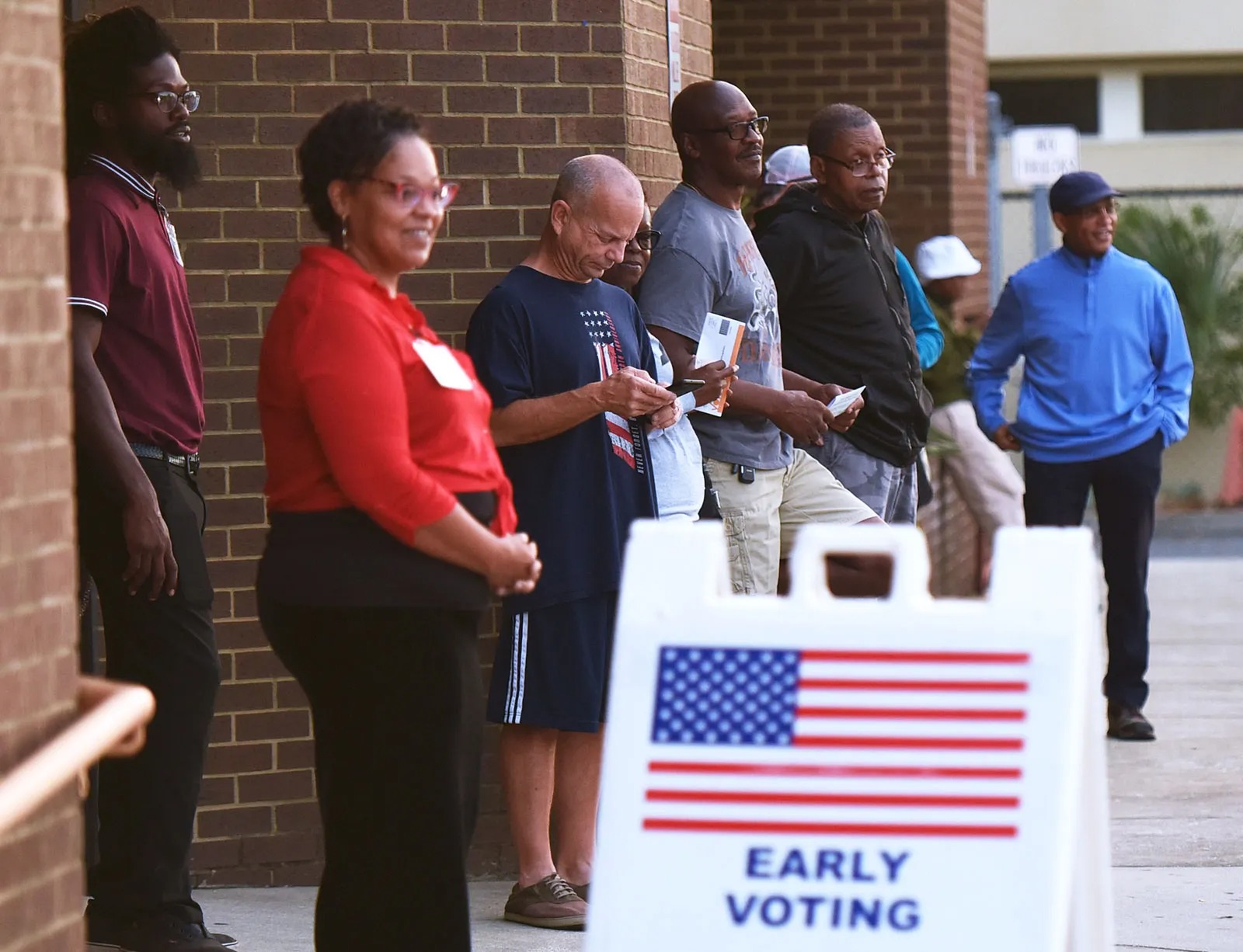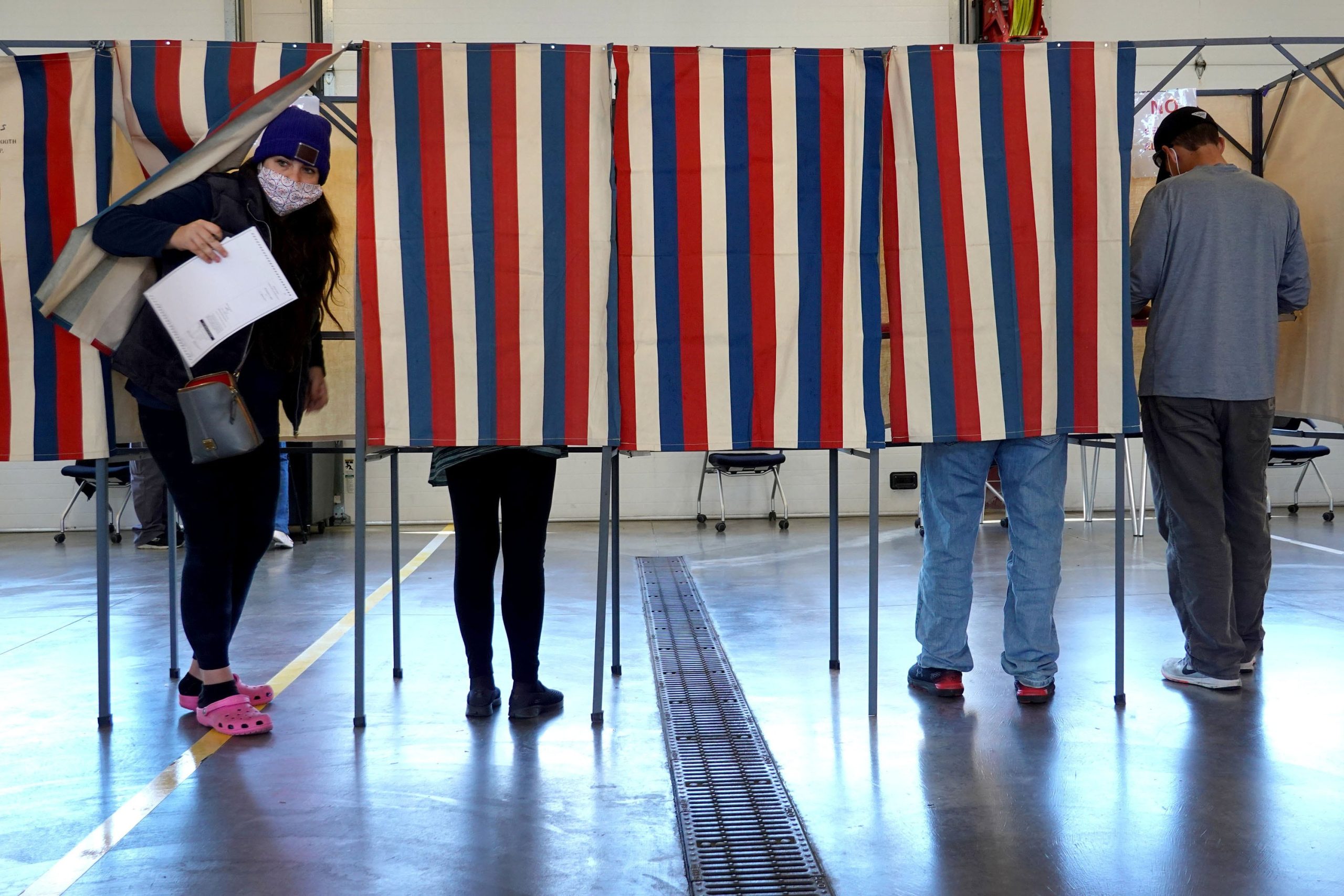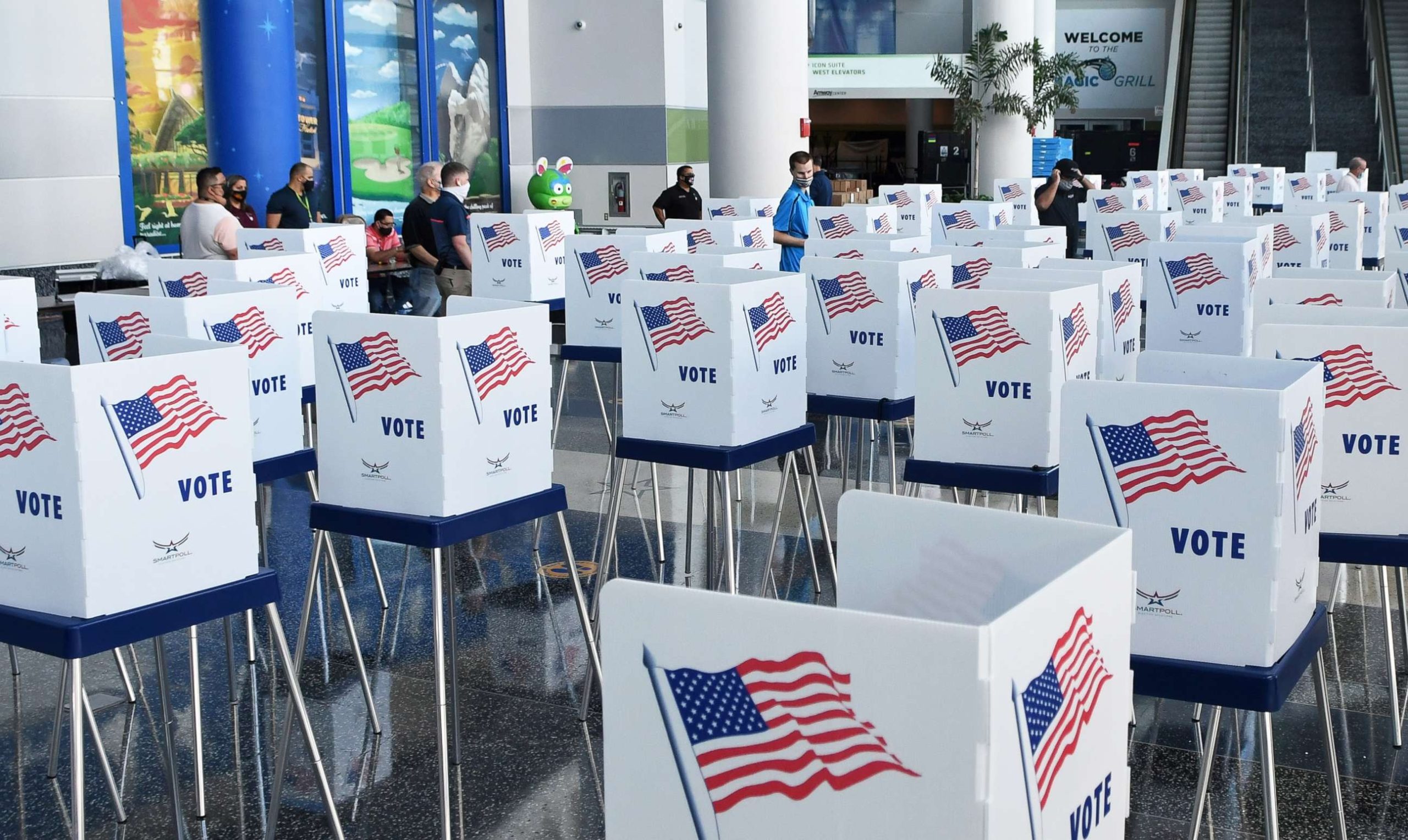In the latest Wisconsin primaries, while the victories of Joe Biden and Donald Trump were anticipated, voters delivered unexpected outcomes by endorsing Republican-backed election reforms and demonstrating anti-war sentiment.
The approved state constitutional amendments have stirred concerns among election officials and voting rights advocates. One amendment prohibits election offices from receiving private grants, a crucial funding source during the 2020 pandemic elections, for necessities like protective gear and contactless voting setups.
This funding, mainly provided by the Center for Tech and Civic Life and criticized by Republicans as unfairly benefiting Biden, has been a focal point of contention.

Voters in Wisconsin (Credits: Britannica)
Another amendment passed with GOP support specifies that only officially designated election officials can conduct election-related tasks. This mirrors existing state laws but potentially complicates the execution of elections due to its vague language regarding the role of non-officials essential to smooth election operations.
These amendments could potentially lead to higher budget requests for election operations, as noted by Claire Woodall, executive director of the Milwaukee Election Commission. The Second Amendment’s ambiguity raises questions about the extent of non-official involvement in the election process, a concern shared by Ann Jacobs of the Wisconsin Elections Commission.
The election also highlighted dissatisfaction with the leading presidential candidates. The Listen to Wisconsin campaign, pushing for an anti-war message against Biden’s policies on Gaza, saw around 8% of voters, a figure in comparison to Biden’s 2020 victory margin, opt for an “uninstructed” vote as a form of protest, particularly in Dane County, a traditionally Democratic stronghold.

Wisconsin Voters (Credits: Votebeat)
Similarly, many Republican voters chose candidates no longer in the race, signaling a rift within the party regarding Trump’s nomination. According to Charles Franklin of Marquette Law School Poll, this phenomenon reflects a broader dissatisfaction trend reminiscent of the 2016 election, suggesting an openness among voters to third-party options when faced with unpopular nominees.
These developments, reflecting a mix of party loyalty and burgeoning dissent, hint at a complex political landscape as the election cycle progresses, with implications for party dynamics and the broader electoral process in Wisconsin and potentially beyond.























